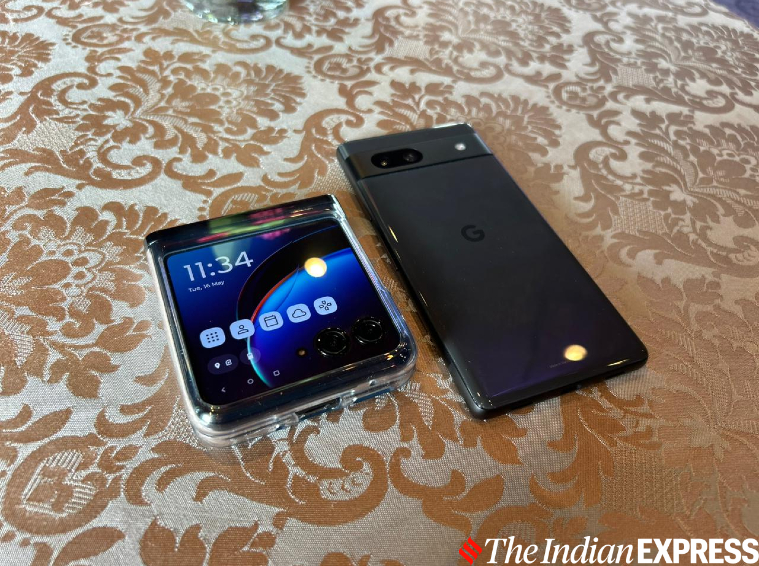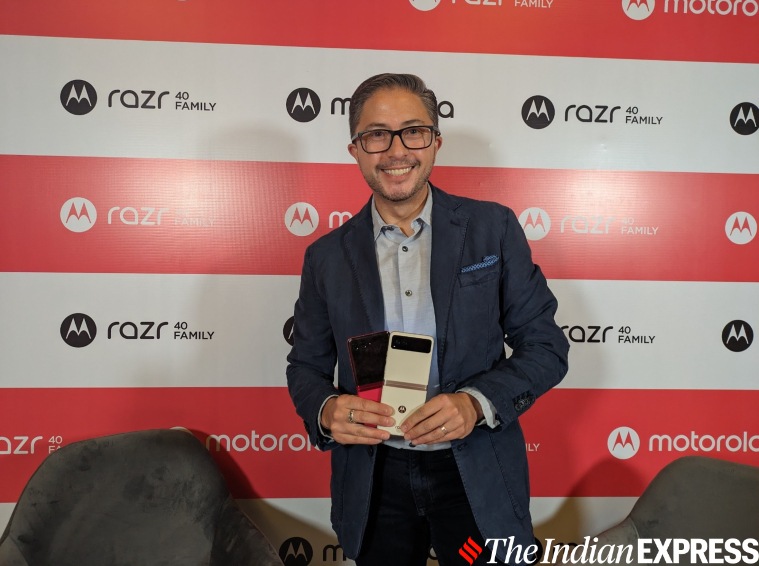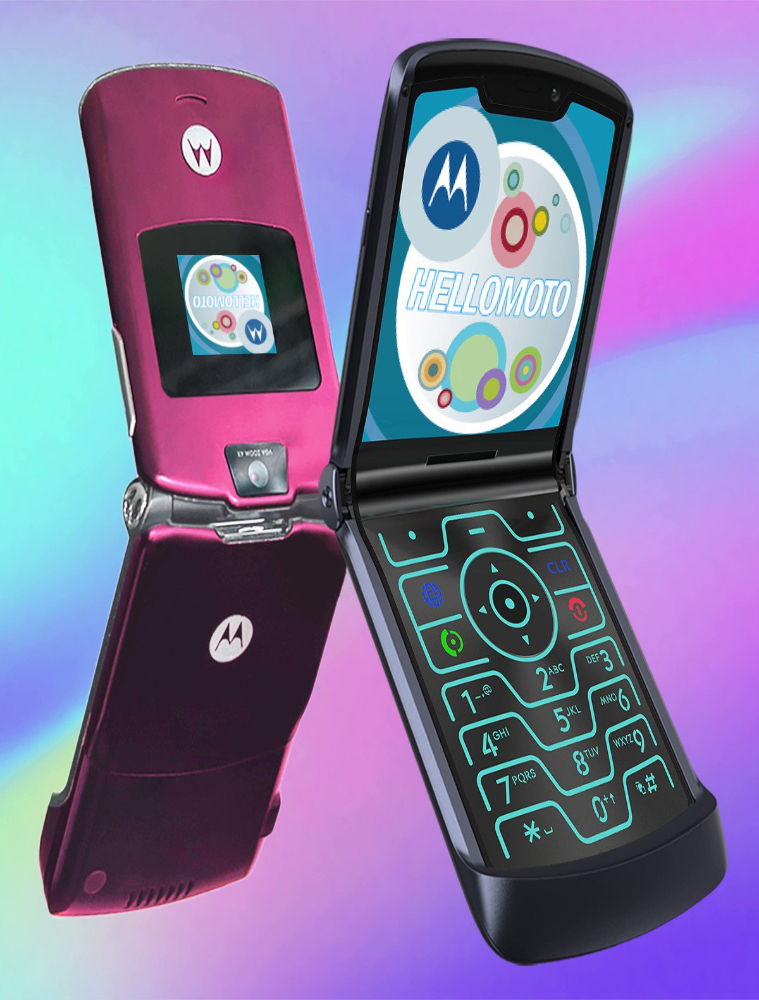“There could be a bit of nostalgia, but again, some fundamental consumer problems are being solved in terms of size and pocketability.” Ruben Castano, Motorola’s executive director of customer experience and design, continues to believe in the clamshell-style phone form factor 19 years after the first Moto Razr was released. The Razr would go on to change the handset market forever.
Castano, on his first trip to India to attend the launch of the Motorola Razr 40 series, says a flip-style phone brings the best of both traditional design and modern features rolled into a single device. “We have simplified [this] form factor as a smartphone in a way that is extremely easy to use, both closed and open as a traditional device,” he tells indianexpress.com in an interview.

When the Razr was released in 2004, it was impossibly thin. The device was made using premium materials that made the Razr feel more like jewellery than a piece of tech. It was an insanely cool-looking flip phone that could fold in half.
 The Motorola Razr 40 Ultra next to Google Pixel 7a. (Image credit: Anuj Bhatia/Indian Express)
The Motorola Razr 40 Ultra next to Google Pixel 7a. (Image credit: Anuj Bhatia/Indian Express)
With the new Razr 40 Ultra, Motorola has taken the basic template of a clamshell, flip-phone-style form factor like the original Razr but given it a contemporary reinterpretation. “There’s still a lot of attachment to the original Razr now, not in the design itself but in what the foldable form factor stands for and what Razr also stands for in terms of innovation and modern design. But those things change.”
Castano, who has been with Motorola for over 18 years, says just like the flip-style phone form factor, the foldables too have evolved over the years. Motorola began selling a new version of the iconic Razr flip phone with a folding screen in 2019 and now it launches a new model every year with a refined design and updated internals. The company’s first three attempts at a modern clamshell with a foldable display have been hit-and-miss, though Castano thinks otherwise. “It is a journey, not only in consumer needs, but it’s a journey for us from a design and development standpoint, as we continue to optimize the form factor itself.”
Castano admits getting the foldable form factor right can be quite challenging. “From a design and engineering standpoint, if you notice, everything has to be duplicated, dual batteries, dual PCB boards, and a lot of cables going from the flip of the device to the base of the device. So in that first generation, we actually couldn’t do a [larger display] because space was at a premium.”
 Castano believes devices like the Razr 40 Ultra solves the real pain point consumers have with their current smartphones. (Image credit: Anuj Bhatia/Indian Express)
Castano believes devices like the Razr 40 Ultra solves the real pain point consumers have with their current smartphones. (Image credit: Anuj Bhatia/Indian Express)
He adds: “As we learned more about the form factor, we got to a point where we can have this solution on the Razr 40 Ultra that delivers this extremely large external display, bigger battery, wireless charging, stereo speakers, all things that weren’t present in third, second, or even first generation models.”
Story continues below this ad
For Castano, the Razr 40 Ultra not only pays homage to the iconic Razr but also demonstrates how Motorola is moving forward into the future while continuing to improve on the flip-style phone factor. “We have to understand that this [form factor] made the transition from a feature phone to a smartphone,” he says. Castano says consumers have been telling them such a phone has to be “small, has to be pocketable and easy to carry in the hand.” “So those elements we brought in even the first generation when we converted this form factor into a smartphone.”
Castano agrees that customers have changed with the times. The Razr 40 Ultra has a 3.6-inch outer display. It’s bigger than anything else offered on a flip-style foldable right now. It’s not just a notifications display; it’s a display that can be used for various widgets and applications, all of which can be opened and used directly on this screen. “Being a smartphone and seeing what consumers do on devices today, we also realised access to content was extremely important even when the device was closed,” he explains the logic behind Razr 40 Ultra’s larger outer display.
 Released in 2004, the Razr V3 was one of the first phones to achieve cult-like status in a similar way as the iPhone in later years. (Image credit: Motorola/Twitter)
Released in 2004, the Razr V3 was one of the first phones to achieve cult-like status in a similar way as the iPhone in later years. (Image credit: Motorola/Twitter)
Motorola has spent a lot of time perfecting the form factor but also tried to iron out issues that the first iterations of foldable phones had suffered from. “The aspect ratio of the overall form factor is critical for consumers, not exceeding a certain width is very important so it fits in a majority of consumers’ hands. So that’s also the reason why not only the massive external display but also the internal display are completely custom to Motorola. These are not off-the-shelf displays that are purposely made for Motorola devices, because we need to meet certain dimensions for the product itself,” Castano adds.
Some may question Motorola for sticking to the flip-style foldable form factor and not bringing a phone that opens like a book to reveal a tablet-sized screen. Castano says Motorola isn’t done with the clamshell-style foldable smartphones just yet as it can still add a lot of new features on top of the nostalgia and emotional and functional elements. He cites the example of how consumers can hold the Razr 40 Ultra as a traditional camcorder, opening a new way to record videos.
Story continues below this ad
“There’s still a lot to do with [this] form factor… it’s a traditional smartphone that magically folds and becomes half the size so that it’s easy to carry, but still allows you to access the content. So that’s why this form factor works.”
But Motorola isn’t limiting itself to the Razr 40 Ultra, which is a high-end foldable smartphone. The company is also bringing a lower-tier model in the form of Razr 40. The device shares many similarities with the Razr 40 Ultra but with a smaller external screen and a much cheaper price point.
“We have used the automotive analogy… we created a platform. Both devices are built off the same platform, sharing a lot of design and engineering developments, which allows us to have a very premium product but positioned at a lower price point so it’s going to become more accessible to more consumers.”



 The Motorola Razr 40 Ultra next to Google Pixel 7a. (Image credit: Anuj Bhatia/Indian Express)
The Motorola Razr 40 Ultra next to Google Pixel 7a. (Image credit: Anuj Bhatia/Indian Express) Castano believes devices like the Razr 40 Ultra solves the real pain point consumers have with their current smartphones. (Image credit: Anuj Bhatia/
Castano believes devices like the Razr 40 Ultra solves the real pain point consumers have with their current smartphones. (Image credit: Anuj Bhatia/ Released in 2004, the Razr V3 was one of the first phones to achieve cult-like status in a similar way as the iPhone in later years. (Image credit: Motorola/Twitter)
Released in 2004, the Razr V3 was one of the first phones to achieve cult-like status in a similar way as the iPhone in later years. (Image credit: Motorola/Twitter)





